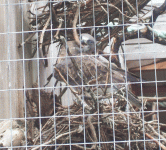Blog Categories
- Blog home
- Cariboo Chilcotin Coast (9)
- Mighty Fraser Country (19)
- Northern BC (10)
- The Kootenays (17)
- Thompson-Okanagan (19)
- Tourism Associations (3)
- Uncategorized (0)
- Vancouver (197)
- Vancouver Coast Mountains (26)
- Vancouver Island (110)
- Victoria (57)
- Whistler (17)
Related Travel Information
North Island Wildlife Recovery Association
- Author: WantsToTravelMore
- Accommodation: Vancouver Island
If you want to see some animals in captivity, but are in captivity for a good reason — i.e. they’d be dead in a minute in the wild — the North Island Wildlife Recovery Centre in Errington BC is a good choice.
To get there, you need to take the Alberni Highway (4A) which you can access via Highway 19. It’s quite close to Parksville (about 4 km) and makes an excellent day trip for the family.
The place is not a zoo as such and it has a wonderfully rustic feel about it. It’s a place to try to help animals that stupid humans have injured either deliberately or through mishap. Your fees to enter and anything you buy in the gift shop will all help them fund the facility.
The non release-able birds are amazing. Seeing a bald eagle up close is terrific, but frankly I have a soft spot for the owls, which come in so many cool shapes.
They have a bear named Knut who was born in captivity and is too used to humans to be released. The bears they do treat and release are segregated from the human visitors because the whole point is to keep them unused to humans and, more importantly, human generated “snacks,” AKA garbage.
I personally found the taxidermy section a bit creepy; it’s always sad to realize that so many wonderful creatures have perished at human hands for no good reason. But from an educational perspective, it’s quite valuable as you can get close and read about what these animals were like.
If you bring your children, take the time to let them understand how their day-to-day actions can have either a negative or positive effect on the world around them. Even the oddest looking turkey — or turkey vulture for that matter — has its own beauty.
For more information: www.niwra.org




